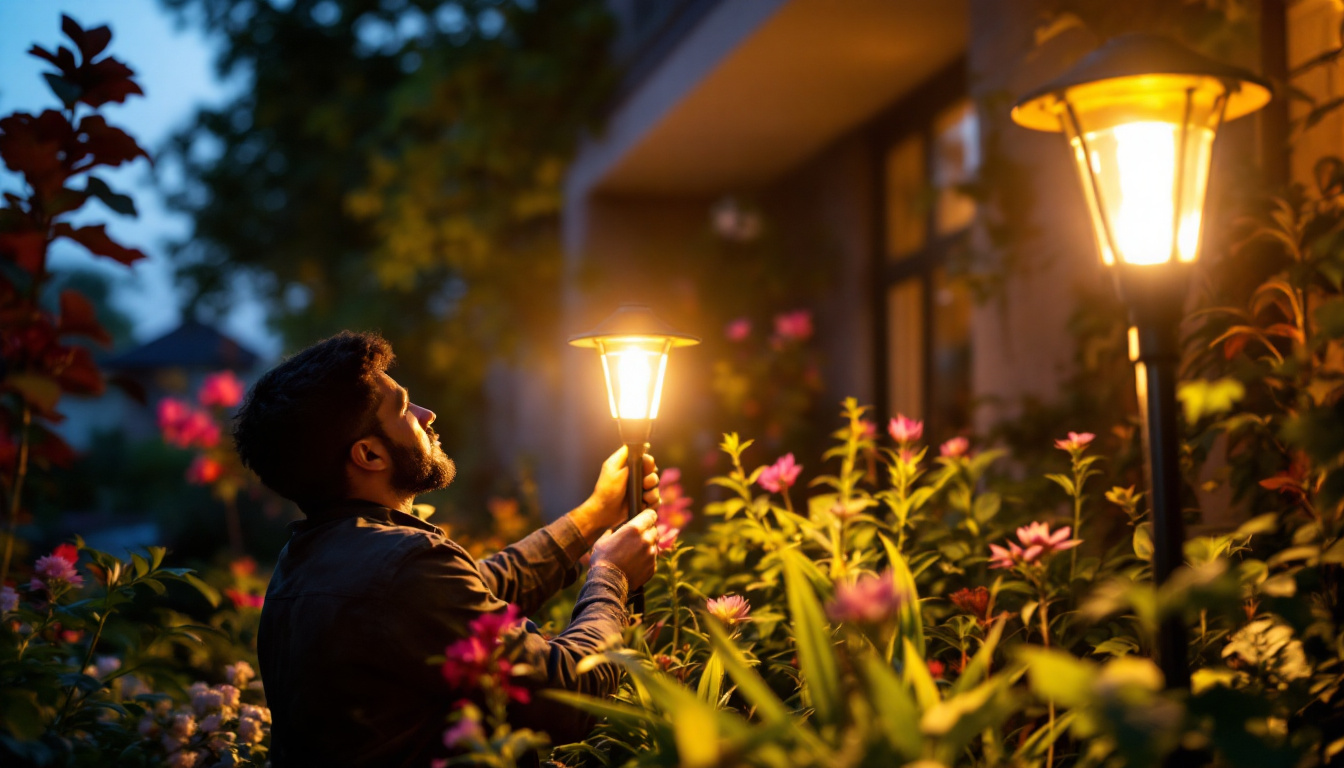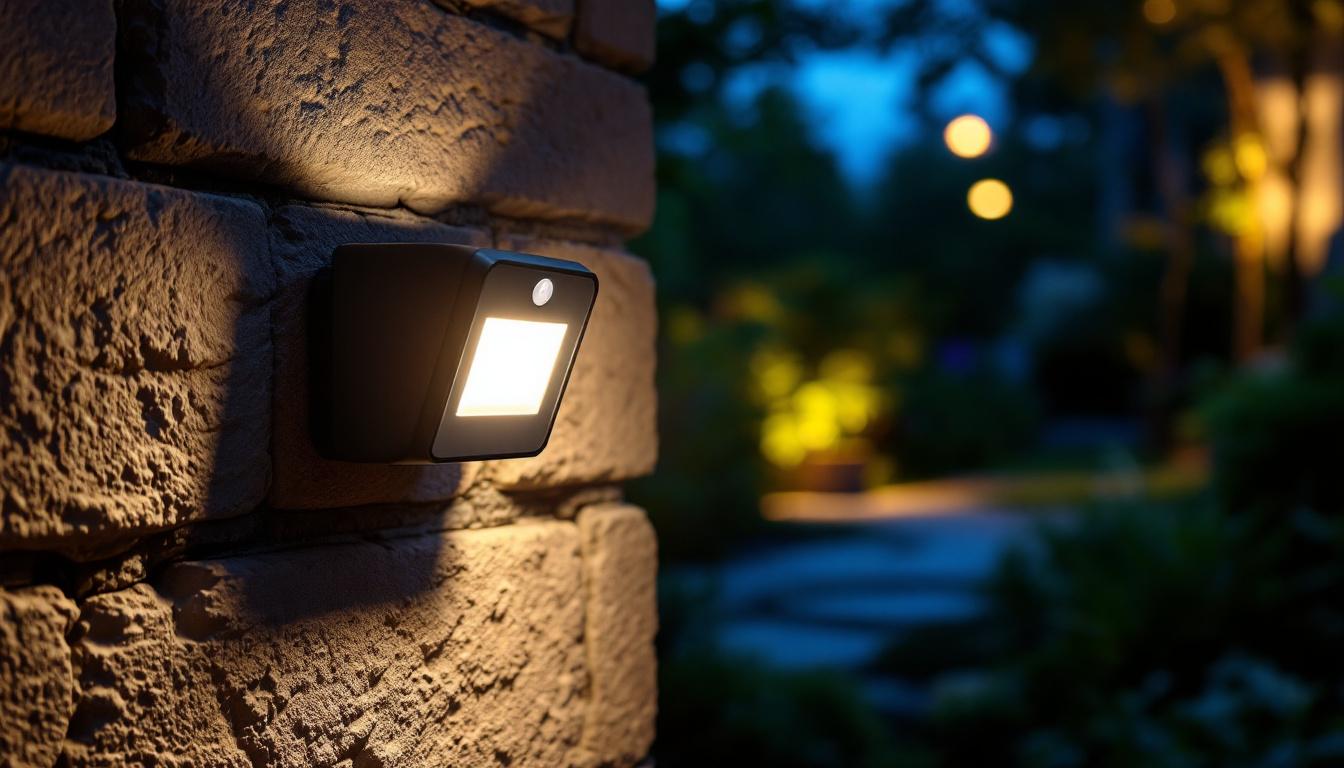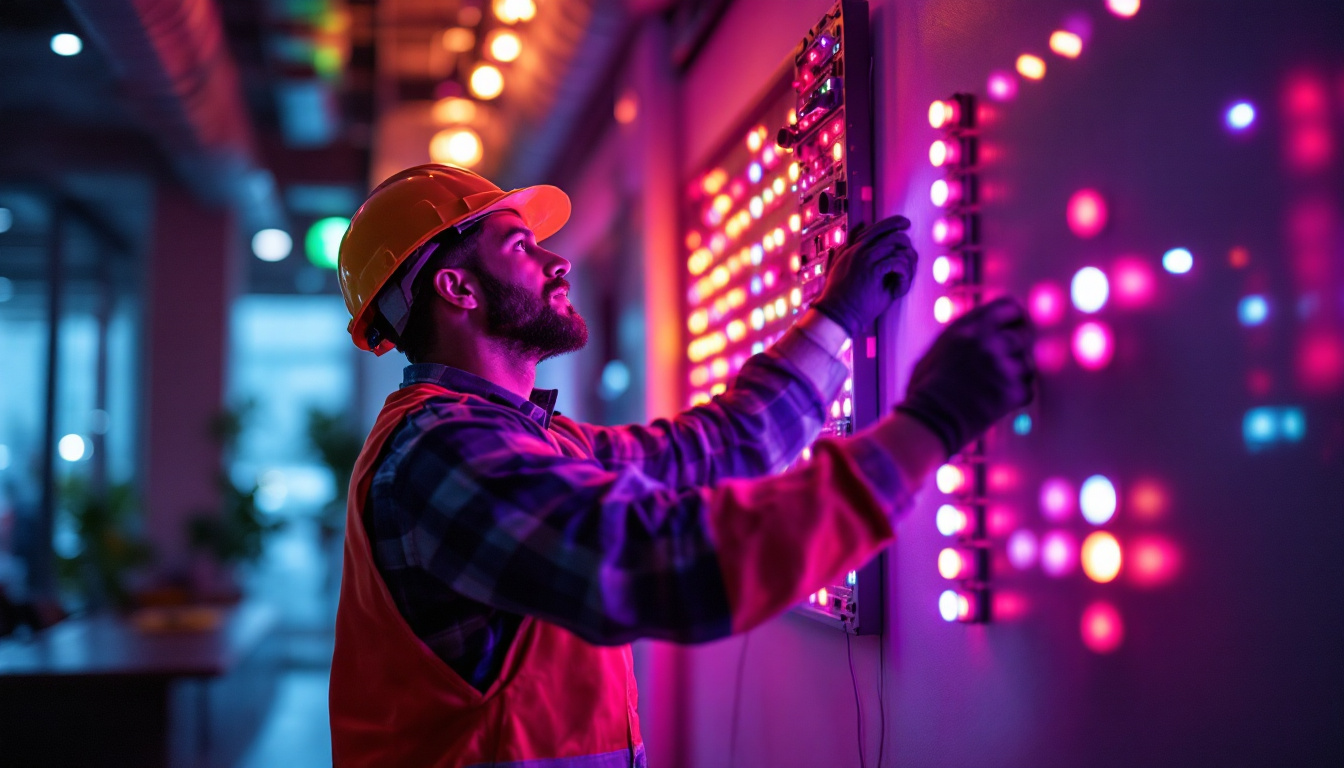
As the demand for sustainable energy solutions continues to rise, solar lighting has emerged as a popular choice for both residential and commercial properties. However, many users find themselves frustrated when their solar lights fail to perform as expected. This article delves into the common reasons why solar lights die prematurely and offers insights from expert lighting contractors on how to enhance their longevity and efficiency.
Solar lights operate by converting sunlight into electricity through photovoltaic cells. This energy is stored in batteries and used to power LED lights during the night. While the concept is straightforward, the execution can be complex, leading to various issues that can affect performance. The efficiency of solar lighting technology has improved significantly over the years, making it a popular choice for both residential and commercial applications. As the world increasingly turns to renewable energy sources, understanding the intricacies of solar lighting becomes essential for maximizing its benefits.
To better understand why solar lights may fail, it is essential to look at their key components:
Each component plays a crucial role in the overall functionality of solar lights. If any one of these parts fails, the entire system can be compromised. The solar panel’s efficiency can vary based on its material and design, with monocrystalline panels often providing the highest efficiency rates. Meanwhile, the choice of battery technology—whether lithium-ion or nickel-cadmium—can significantly influence the longevity and performance of the solar lighting system. Understanding these components helps users make informed decisions when selecting solar lights for their needs.
Despite their advantages, solar lights are not without their problems. Here are some common issues that can lead to early failure:
Additionally, improper installation can exacerbate these issues. For instance, if solar lights are placed in shaded areas or obstructed by overhanging branches, their ability to harness sunlight diminishes significantly. Regular maintenance, such as cleaning the solar panels to remove dust and debris, can also enhance performance. Furthermore, the quality of the components used in solar lights can vary widely, with cheaper models often sacrificing durability for cost, leading to a higher likelihood of failure. Understanding these factors can empower users to choose the right solar lighting solutions and ensure they function optimally for years to come.
Several factors can influence how long solar lights last. Understanding these elements can help contractors advise clients on the best practices for maintaining solar lighting systems.
The quality of the materials used in solar lights significantly impacts their durability. Cheaper models often use lower-quality batteries and solar panels, which may not withstand the test of time. Investing in higher-quality products can lead to better performance and longevity. For instance, premium solar panels are typically made from monocrystalline silicon, which is more efficient at converting sunlight into energy compared to polycrystalline options. Additionally, the lifespan of batteries can vary widely; lithium-ion batteries tend to last longer and perform better in various temperatures than their lead-acid counterparts, making them a worthwhile investment for long-term use.
Proper installation is critical for the success of solar lighting systems. Lights should be positioned to maximize sun exposure, ideally in locations that receive direct sunlight for several hours each day. Additionally, ensuring that the lights are securely mounted can prevent damage from wind or other environmental factors. It’s also important to consider the angle of installation; a slight tilt can enhance solar panel efficiency by allowing for better sunlight capture throughout the day. Furthermore, avoiding shaded areas, such as those under trees or nearby buildings, can significantly improve the overall effectiveness of the solar lights.
Regular maintenance can extend the life of solar lights. Cleaning the solar panels to remove dirt and debris is essential for optimal performance. Furthermore, checking and replacing batteries as needed can prevent issues related to power storage. In addition to these tasks, inspecting the fixtures for signs of wear and tear, such as rust or cracks, can help identify potential problems before they escalate. Seasonal maintenance, such as ensuring that snow or ice is cleared away from solar panels during winter months, can also play a crucial role in maintaining functionality. By taking these proactive steps, homeowners can ensure that their solar lighting systems operate efficiently and effectively for many years.
Lighting contractors have valuable insights based on their experiences with solar lights. Here are some expert recommendations for ensuring solar lights remain functional for years to come.
When selecting solar lights, contractors should prioritize products with a proven track record. Look for brands that offer warranties and have positive customer reviews. Additionally, consider the specific needs of the installation site, such as the amount of sunlight available and the desired brightness level.
Clients often lack knowledge about the maintenance requirements of solar lights. Educating them on how to care for their solar lighting systems can significantly enhance performance. This includes advising them on the importance of keeping solar panels clean and understanding the signs of battery wear.
As technology continues to evolve, newer solar lighting solutions offer improved efficiency and durability. Features such as smart sensors can optimize energy use, while advanced battery technologies can extend the lifespan of the lights. Contractors should stay informed about the latest advancements in solar lighting to provide the best options for their clients.
Despite the growing popularity of solar lights, several misconceptions persist that can lead to dissatisfaction among users. Addressing these myths can help contractors better manage client expectations.
While it is true that solar lights perform best in direct sunlight, they can still function on cloudy days. Many modern solar lights are designed to store excess energy, allowing them to operate even when sunlight is limited. However, prolonged periods of cloudy weather can still impact performance.
Some clients may believe that the cost of maintaining solar lights outweighs their benefits. In reality, solar lights often require less maintenance than traditional lighting systems. With no wiring or electricity bills, the long-term savings can be significant.
Examining successful solar light installations can provide valuable lessons for contractors. Here are a couple of case studies that highlight effective practices and outcomes.
A residential community sought to enhance safety along pathways with solar lighting. The contractor selected high-quality solar lights with motion sensors to conserve energy. By installing the lights in well-lit areas and educating residents on maintenance, the community enjoyed improved safety without increased energy costs.
A commercial property manager wanted to illuminate a large parking lot without incurring high electricity bills. The contractor recommended installing solar lights with advanced battery technology to ensure consistent brightness throughout the night. The project was a success, leading to increased security and positive feedback from patrons.
The solar lighting industry is constantly evolving, with new trends emerging that promise to enhance functionality and efficiency. Staying ahead of these trends can help contractors offer cutting-edge solutions to their clients.
Smart technology integration is becoming increasingly prevalent in solar lighting systems. Features such as remote control, smartphone apps, and automated dimming can provide users with greater control over their lighting solutions. This trend is likely to continue as consumers demand more customizable options.
Advancements in battery technology are set to revolutionize solar lighting. Newer batteries are more efficient, have a longer lifespan, and can charge faster. This means that solar lights will be able to operate more reliably, even in less-than-ideal weather conditions.
As solar lights become more popular, manufacturers are focusing on aesthetic designs that complement various architectural styles. This trend allows for greater versatility in outdoor lighting solutions, appealing to a broader range of customers.
Solar lights offer a sustainable and cost-effective lighting solution for various applications. However, their longevity and performance can be compromised by several factors, including component quality, installation practices, and maintenance. By understanding these elements and implementing expert recommendations, contractors can ensure that solar lights continue to thrive in both residential and commercial settings.
As the industry continues to evolve, staying informed about the latest technologies and trends will be crucial for lighting contractors. By embracing innovation and educating clients, the full potential of solar lighting can be realized, leading to safer, more sustainable outdoor environments.
Ready to elevate your solar lighting installations with products that promise longevity and performance? Look no further than LumenWholesale. We provide contractors with high-quality, specification-grade lighting solutions at unbeatable wholesale prices. Our extensive selection not only meets but exceeds industry standards, ensuring your projects shine with reliability and efficiency. Plus, with free shipping on bulk orders, you can secure premium lighting at the best value—without any hidden fees. Don’t let subpar products dim your reputation. Choose LumenWholesale for a seamless blend of quality, affordability, and convenience. Wholesale Lighting at the Best Value is just a click away.

Discover how solar-powered garden lamps are revolutionizing the lighting industry, offering eco-friendly solutions that boost efficiency and profitability for contractors.

Discover the transformative power of lighting in stairwell design.

Discover the top benefits of small motion sensor light outdoor solutions for lighting contractors, including enhanced security, energy savings, and easy installation—boost your projects today!.

Discover the essential do’s and don’ts for lighting contractors working with LED RGB lights.